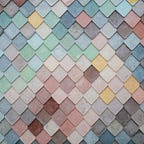Neoclassical Design is a Time Capsule
It takes your personal flair and taste to plan your home’s décor. While some of us may adore the vibrant color of 1980s furniture, others prefer modern and up to date. I fall on the modern spectrum of decor, but I do appreciate and value traditional aesthetics. Numerous insider fashion analysts predict that Neoclassical designs will make a comeback. It is alluring while also being excellent and timeless. In my opinion, this design is perfect for someone who values a luxurious touch in their home!
What is Neoclassical Decor?
An engineering standard that was frequently used in Europe during the eighteenth and nineteenth centuries is the Neoclassical decor plan. It was initially used as a basic model dwelling in ancient Greece and Rome. Neoclassical is therefore a simplified version of the ornate and elaborate styles. The Lavish plan is centered on style rather than sentimentality.
Important Elements of a Neoclassical Interior Design
In comparison to the ornate and elaborate styles, the Neoclassical decor scheme appears cozier. In contrast to the sleek design of modern dwellings, it also provides a traditional touch. There are a few key considerations to keep in mind if you want to add a Neoclassical element to your house:
Variety
The Neoclassical style typically favors subtle and muted color palettes. Neoclassical enrichment primarily uses the colors white, cream, and dark along with white and cream conceals, muted delicate grays, blues, greens, and yellow are frequently employed.
Rarely are striking colors like black and crimson used in Neoclassical architecture. Dark, silver, or gold are typically incorporated as accents or insignificant finishing details, if they are used. To make your Neoclassical design look more modern, substitute pink or naval force for gold or silver in the complement. The opulent and elegant appearance of your home will be enhanced by the muted and stunning tones.
Windows
Costly windows and tall roofs are unquestionably essential for a quick, admirable glimpse at your property. However, if you want a beautiful Neoclassical course, you need to excellently strengthen the powerful engineering aspects. The use of window coverings and shades is an indisputable prerequisite for Neoclassical design. It will enhance coziness and highlight the Neoclassical elements.
The introduction of floor-to-roof drapes is required for your Neoclassical fantasy. It is crucial to concentrate on its length. It is preferable if your shade only partially covers your floor. Elegant substantial materials, including cotton, velvet, or silk, are the ideal materials to use.
Enhancement
Neoclassical architecture, despite being strongly influenced by the excellent Floridian style, provides an opulent atmosphere with few opportunities for ornamentation. By only including items that add value, the Neoclassical design maintains a reasonable level of subtlety. The key to neoclassicism is striking a balance between rich and relaxed climates. In this sense, containing rich style means a lot.
When finishing your house in a Neoclassical design, choosing one center is crucial. Wedgewood dinnerware, sculptures, multipurpose containers, and superb mirrors may be able to show off the opulence in your home. Neoclassicals nevertheless attempt to achieve a simple yet elegant and timeless appearance. For example, a single point-by-point container performs better than a disorganized game strategy.
For your furnishings, choose items from the same family. You can choose seats and tables using comparable designs or options. A floral example floor covering can be used as the centerpiece of your enrichment if you want to include something unique.
Themes
Being unobtrusive and prepared is one of neoclassicism’s clear goals. Neoclassical interior design means avoiding overt displays of designed objects, walls are typically left unpainted and only use floral themes as framing or accents. Molding shaping is also used as a last element to add structure to the roof.
Carpets and cushions are the perfect medium for displaying some samples while enhancing the overall design. The most common Neoclassical planning illustration is the flower pattern. However, you can always choose different ones, such mathematical examples, to update the previous stance.
Scale and Balance
The heavenly appearance of the Neoclassical plan is what excites me the most. Using graphic elements, you can manipulate and make your room appear bigger or much smaller. The space can appear larger when light color schemes are combined with light colored floors. A space might appear taller when vertical elements like lines or support points are included. Changing the lighting in a room can help make it appear larger overall.
Perhaps the most distinctive quality of every old-style interior design is evenness. Using evenness in your layout can give it a polished, formal feel. However, the enjoyable feeling of watching constant and flawless furniture assembly also feels relaxing.
One of the upcoming trends in interior design, Neoclassical, will give your house the appearance and feel of a work of art. Additionally, it exudes a delicate warmth. Say your home needs a Neoclassical interior design, considering everything, your main task is to envision the appearance of the variety you choose. Neoclassical designs work effectively in a muted variation range.
To avoid a boring and worn-out last post, it is essential to add a carpet as a point of convergence. The best choice for a modest interior is a mat with a delicate variety, a botanical design, or an oriental motif. Neoclassical architecture aims to appear refined and tasteful. Therefore, it should not appear to be occupied and a simpler option for furnishings and enhancements should be chosen.
Neoclassical is a more basic interpretation that is appropriate for some, inspired by the excellent lavish and extravagant styles. It appears unassuming, prepared, and eternal. It also provides mild and hospitable nuance for history buffs. What do you think of this pattern overall? Do you want to use this strategy in your upcoming project?
